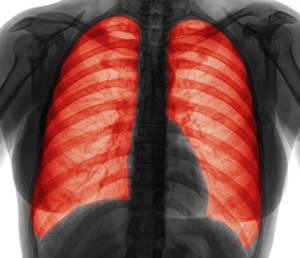
According to the American Lung Association, African Americans suffer from lung cancer more than any other population group in the U.S.
Their report, "Too Many Cases, Too Many Deaths: Lung Cancer in African Americans" takes an in-depth look at a specific problem in a specific community. This report is a compilation of research examining lung cancer among African Americans and the need to eliminate this and other health disparities.
Despite the concerning findings, there’s research that suggests lung disease can be reversed with proper treatment.
According to ScienceDaily.com, researchers exposed mice to tobacco smoke for months. These researchers now have new insight into how emphysema and chronic obstructive pulmonary disease (COPD) develops.
In the Oct. 14th issue of Cell, a Cell Press publication, they also report a promising new way to reverse the lung damage underlying these conditions.
"It has not been very clear what causes the disease and there has been no therapy to stop or reverse lung destruction in emphysema," said Norbert Weissman of the University of Giessen Lung Center in Germany. "There have really been no new concepts about therapy in the last 20 years."
It's not for lack of interest, he said. In fact, COPD, including chronic bronchitis and emphysema, is expected to become the third-greatest cause of death worldwide by the year 2020.
In addition to airway inflammation and decreased respiratory function, COPD is often accompanied by pulmonary hypertension, which is essentially high blood pressure in the lungs. Whether this condition was a cause or a consequence of COPD was not known.
Now, with powerful mouse models of COPD, Weissman and colleagues provide evidence that changes to the pulmonary blood vessels and the development of high blood pressure precede the development of emphysema.
They further trace those effects to an inducible form of an enzyme known as nitric oxide synthase (iNOS), which catalyzes the formation of nitric oxide.
"Nitric oxide (NO) and the nitric oxide system are important for opening up blood vessels and maintaining vascular tone", Weissman said. When nitric oxide levels grow too high, however, the molecule can undergo a chemical reaction forming aggressive peroxynitrite.
"Simply put, peroxynitrite can modify protein functions, leading to the destruction of lung tissue," Weissman said.
It appears this is exactly what happens in the development of emphysema. Mice lacking the iNOS enzyme were protected from both emphysema and pulmonary hypertension.
Importantly, existing pharmacological agents can block iNOS activity, and mice treated with one of these drugs were protected from COPD-like changes to their lung vasculature. Treatment with the inhibitor also successfully reversed the course of the disease in the mice.
"For reversal of emphysema, you need an active restructuring of the lung," Weissman said, noting that there is more work to do to explore the pathways involved.
The iNOS inhibitor used in these studies has already been used in clinical trials with apparently no major side effects, Weissman says. He and his team plan to pursue the use of the drug as an inhaled therapy, with the hope that it may reach therapeutic concentrations only where it is needed.

Jasmine Browley holds an MA in journalism from Columbia College Chicago, and has contributed to Ebony, Jet and MADE Magazine among others. So, clearly, she knows some stuff. Follow her digital journey @JasmineBrowley.








